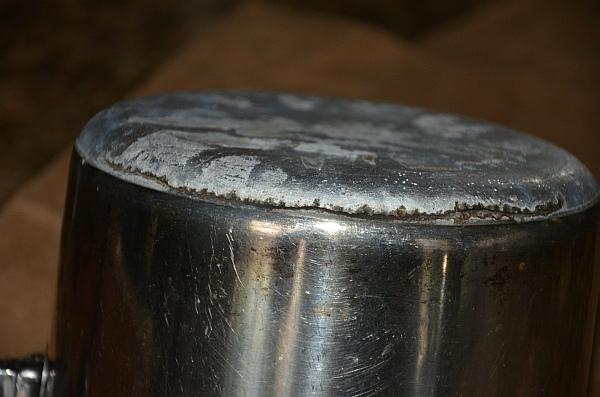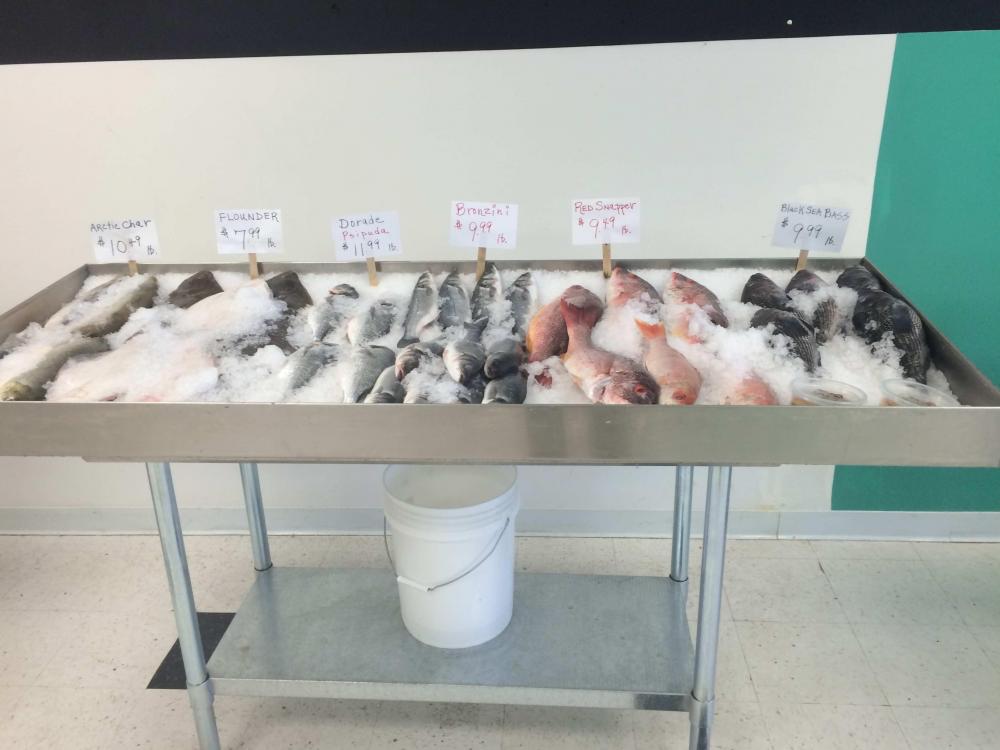-
Posts
1,651 -
Joined
-
Last visited
Content Type
Profiles
Forums
Store
Help Articles
Everything posted by AlaMoi
-
if you go here: https://www.ford.com/cmslibs/content/dam/brand_ford/en_us/brand/resources/general/pdf/guides/21Towing_Ford_F150_Dec3.pdf you'll see towing capacity depends largely on engine size. tongue weight also comes into play - for gooseneck / fifth wheel trailers things are slightly different. but methinks you've got the horse behind the cart - the weight of a "food trailer" varies greatly by what equipment / etc you need for the foods you want to prep and sell. they get very heavy, very fast when all the regulatory stuff is added in - water tanks, hot water heater, waste tanks, sanitary surfaces every where, fire suppression systems - it's a long list and every state plus county has its own quirks. you may be perfectly legal for York County and get nailed to the wall in Bucks County. when buying, new or used, be sure the seller/builder knows the requirements for the area(s) you intend to operate in and has a written policy about "conformance" also to note: anything you sell out of a mobile unit must be prepared in an approved/licensed kitchen. you can't make sandwiches or roast brisket in your home kitchen for sale in the unit.... I would suggest you develop the plan of what you want to prep and serve, then see what size trailer or truck you need for that business plan.
-
I use an air popper. for two, 60 grams of kernels per "charge" it's quick, easy, foolproof - pops into a big stainless bowl, olive oil drizzled down the bowl edges, tossed & salted to taste. the freshness - and brand - of kernels makes a huge difference. I buy a bottle of kernels in the fall and toss whatever is left in the spring. life is too short to break teeth on unpopped kernels.....
-
I have simmered chicken, beef and pork - in "plain water," in beer, in wine, and also in "stock/broth" if there is a difference, , , that done in a stock/broth is slightly more flavorful. the whole "osmotic exchange" thing is like . . . seriously influenced by "did you salt the water/stock/brine/wine?" imho, do what your gut tells you in the situation, and be mindful of salt in the process.... acidity - common in wine poaching - can/does/quickly affect texture of poultry - I'm not a fan of 'wine soaked chicken . . . " stuff.
-
follow-up: two days 'maturing' in the fridge has apparently toned down the kalamata olives - DW came in for thirds-on-a-cracker.... anything past the first constitutes a degree of like factor.... picked up a jar of castelvetranos - but methinks next round will be 50-50 kalamata & (canned) black olives - with some anchovy at the ready....
-
I agree about the black olives - okay for stuff like celery trays and pizza - but not likely to generate a flavor bomb. toasted some baguette slices - I like the kalamata concoction - but probably will not dislike a milder flavor....
-
made a tapenade using the usual garlic / olives / olive oil / lemon juice recipe - with kalamata olives. I have anchovy (tinned and paste) on standby . . . we both like anchovy.... now,,, I like kalamata olives - especially in a salad that involves feta.... however, DW is underwhelmed and suggests 'it is just too strong' we don't have a large selection of olives at the market - other than the usual green/black/with without stuffings... Castelvetrano the store has an olive bar - but the descriptions are strictly marketing BS - not specific olive types. lots of 'mixtures' the Castelvetrano press is pretty good - any experiences on toning down from kalamata welcomed. other tips.... i.e. 50-50 Kalamata & black/green, etc. we do Amazon, so we should be able to get any type . . .
-
one 'classical' approach is a quark based filling, not layered, but rolled up like typical fruit strudel. around here finding the quark would be the major problem - many substitutes, but none are quite like quark.... there's several kabillion 'flavorings' for the filling - it's basically what you like / remember.
-
Both salted and unsalted butters are available . . . both are available pretty much anywhere. it's a question of what is put on the table, not what's available.
-
table butter in Germany ( other European.?? - Nordic countries for sure....) is always unsalted. having traveled overseas with many work colleagues, they were almost always surprised/pleased at the taste of the butter served in 'Continental (hotel) breakfasts' - having been USA raised on salted butter. that said, there a bit more to it. broadly generalizing, European butters have more fat, less water than USDA Grade AA. rather a lot / most of cows are free pasture during temperate months - their diet does impact the flavor of the cream and hence the butter. debate and arguments on the topic abound. I used to buy imported brands for special occasions - but have repeatedly experienced off flavors / lack of freshness / spoiled(?) products - so now for special occasions I fire up the stand mixer and make my own butter.... which is definitely known to be fresh.... two recent revelations/realizations..... Weis Market store brand eggs are not USDA graded, Giant/Ahold brand butters are not USDA AA graded.... assumptions can be untasty....
-
"This odd name used to describe these British sausages actually dates back to the early 20th century, during the time of World War I. Sausages were seen as a popular dish for the British working class, however, after the outbreak of the war, meat was in seriously short supply. In order to continue production and to get by on what meat they did have, cheap fillers and a high amount of water were used in the sausages which caused them to pop and explode rather violently in the cooking pan, giving them the name “bangers.”" https://www.noblehops.com/a-brief-history-on-a-pub-favorite-bangers-mash/
-
recipe write ups with "OMG" quantities / procedures / steps . . . . I simply disregard / toss / click-on-by. if it doesn't sound right, it probably isn't right. to wit - did a Thomas Keller lemon marinated/soaked chicken. a marinade of five lemons set my spider senses off . . and I was right.... it was inedible.
-
the replacement of editors with spell check and auto-correct is not working out well.
-
"PA is slowly allowing wine shipments. Who can and who cannot is mysterious." PA law allows direct ship to consumer, but requires the shipper aka winery - to register/get a license from PA. so now it's legal, but controlled to the point it does not much happen. not all that many wineries have chosen to put up with the paperwork and expense of getting a direct ship licenses for 49 states "not their own"
-
-

Revealed: seafood fraud happening on a vast global scale
AlaMoi replied to a topic in Kitchen Consumer
@curls - York PA - about two hrs north of upper DC - they do offer iced bagged.... -

Revealed: seafood fraud happening on a vast global scale
AlaMoi replied to a topic in Kitchen Consumer
".....the labels are wrong! " I've done enough fishing to recognize when the label does not match the fish. this is a flounder. if one does not consider this to possibly be a flounder, they should avoid eating fish. -
my experience: Calphalon is vastly (self) over rated / performing. I quit the hype after two pots - fry pan and sauce pan.....
-

Revealed: seafood fraud happening on a vast global scale
AlaMoi replied to a topic in Kitchen Consumer
no - mid-Atlantic, inland! this is a family business, started 2 generations back in Florida. they've branched out as marriages added to the geography - they're able to use their sources for 'a wide supply' and ship it themselves..... -

Revealed: seafood fraud happening on a vast global scale
AlaMoi replied to a topic in Kitchen Consumer
-
I do not cook directly on the copper plates.... Aurora is made in Belgium - the "policies" and prices vary - sometimes obscenely - from market to market.
-
is that 2,000 lbs aka one ton _each_ of black/rasp/straw-berries? that is way over and above anything typically done 'in the home' commercially - the berries are cooked, the "pulp" rises to the surface and gets skimmed off. the "juice" is captured. the skimmed solids are pressed on a very fine screen, recovering some juice. waste "solids" may be processed through a rotational separator. none of those kinds of equipments are designed for "home use" in large scale operations, there is a serious "waste" factor. they trade waste for speed. whether your operation can support that kind of waste factor . . . can no say...
-
I have a multitude of sizes, including medium and also large stockpots. bunch of copper pots couple Zwilling Aurora get some copper flame tamer sheets - they turn a gas burner into a "hot plate" incredible useful for anything viscous or for super low simmering. extremely useful for stews, chili, thick soups, etc I have BellaCopper plates - there are others - I paid two arms and 1.5 legs for them years ago - their prices have come down considerable with (I presume) more volume/competition. I don't recommend laminated disk designs.... they tend to come apart as life goes on.
-
supply chains have been severely disrupted. first problem just about everything now comes from China. then a shortage of shipping containers developed (how hard can it be to weld up new containers....ah, all the steel comes from....) then covid took out factory workers, port/ dock workers, warehouse workers, truck drivers . . . this has impacted anything coming from the Orient - not only from China. the lesson that should be learned, but will not be learned, is that China can crash the US economy anytime it wants. China does not need to fire a shot - just prohibit shipping stuff to USA. 'off shore' / made for the lowest cost / etc . . . . has it's drawbacks.
-

Don't ask for steak tartare in my neck of the woods...
AlaMoi replied to a topic in Food Media & Arts
I enjoy a nice beef tartare - with raw egg in the well.... I am however _exceedingly_ picky about where I order it. I ask a lot of 'funny' questions, , , any stumbles/mumbles/I thinks . . . or any remote hint that it's pre-prepared and keep cold ready for service is an order killer... -
the round bit works for bacon strips in the pan - 3/4 in 10" - note: I cut full length strips in half 3-4-5 hamburgers 5-6 sausage patties grilled cheese thin / mini steaks chicken breast sliced to half thickness I also use it on the griddle - pancakes are often preceded by bacon,,, typical bacon strips are longer than it covers but with a little attention to detail one can manage to get the full lengths flat and 'equally' cooked/fried. however it 'shines' in a 10" frying pan - pan's round, it's round . . . . more I've forgotten, I'm sure. it's a neat tool - it not only provides the 'flattening' effect but also is an effective 'no spatter' shield.






